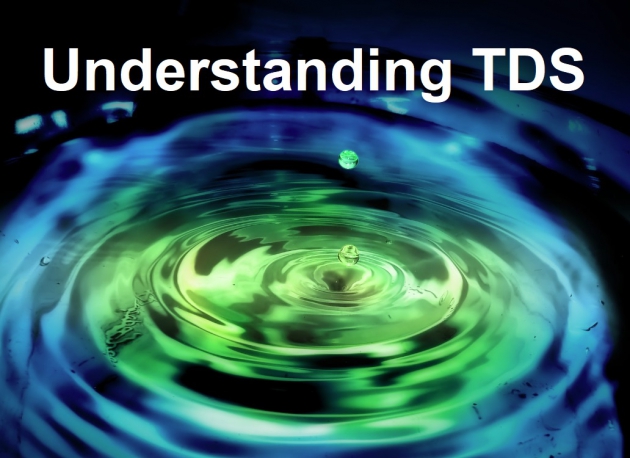Water is a universal solvent, as it has the ability to dissolve substances and absorb the molecules. The number of dissolved particles in water is known as the TDS or total dissolved solids. Understanding the TDS level in your water will provide insight into the overall quality of your water. So, here we’ll delve into the types of TDS, how to measure it and how to address TDS issues in your water.
The TDS Basics:
TDS can be organic or inorganic materials including metals, salts, minerals, or ions that are dissolved into water. Essentially, TDS refers to anything dissolved in water that are not H2O molecules.
Since water is a solvent, particles can be absorbed into water at any point in its journey from rain through to the groundwater. The common TDS materials can include calcium, potassium, lead, copper, chlorine, fluoride, sodium, chloride and herbicides.
TDS can occur in water supplies from natural or man made activities. TDS can accumulate in water from lakes, soil, plants and springs, as the water absorbs minerals from rocks and other surfaces.
On the other hand human activities such as agriculture can lead to herbicides and pesticides in the water, lead may enter water from old plumbing pipes and chlorine is used at water treatment facilities.
Measuring TDS:
TDS is measured as mg/L, which refers to the milligrams per liter in a volume of water, but it can also be measured as parts per million. According to the EPA’s secondary drinking water regulations, the recommended maximum TDS level for drinking water is 500 ppm. Levels higher than 1000 ppm are considered unsafe TDS levels and if the level exceeds 2000 ppm, filtration systems may not be able to properly filter the TDS.
The simplest way to measure TDS is using a TDS meter. This requires taking a sample of your water and then analyzing the reading. If the meter says 200 ppm, it means that in one million particles, there are 200 dissolved ions and 999,800 water molecules. This would mean that you have a low TDS level.
Unfortunately, TDS meters cannot provide insight into the types of TDS present, which is crucial for water quality. In this case, you will need to have lab testing to confirm what contaminants are in your water.
Reducing TDS:
There are several types of water treatment systems that can be effective at reducing or removing TDS from water supplies, particularly if the level is 500 ppm or more. The options include:
- RO: RO or reverse osmosis is one of the most effective filtration types to remove contaminants. The water is pressurized through a semipermeable membrane, which contains very small pores to block contaminants. RO can not only eliminate TDS, but also viruses, bacteria, chemicals and metals.
- Distillation: Distillation mimics the natural purification method, as it uses evaporation. The distiller converts water into steam, leaving the contaminants behind. The steam is then collected and condensed back into a contaminant free liquid. Due to the equipment and costs involved, distillation is rarely used in domestic settings.
- Deionization: TDS can be removed through ion exchange, as resin is used to control the ion’s electrical charge. Water ions replace the TDS charged ions to create high purity water. For this reason, deionization cartridges are often called high purity filters.
If you’re considering a water treatment options, contact your local water treatment specialist.

